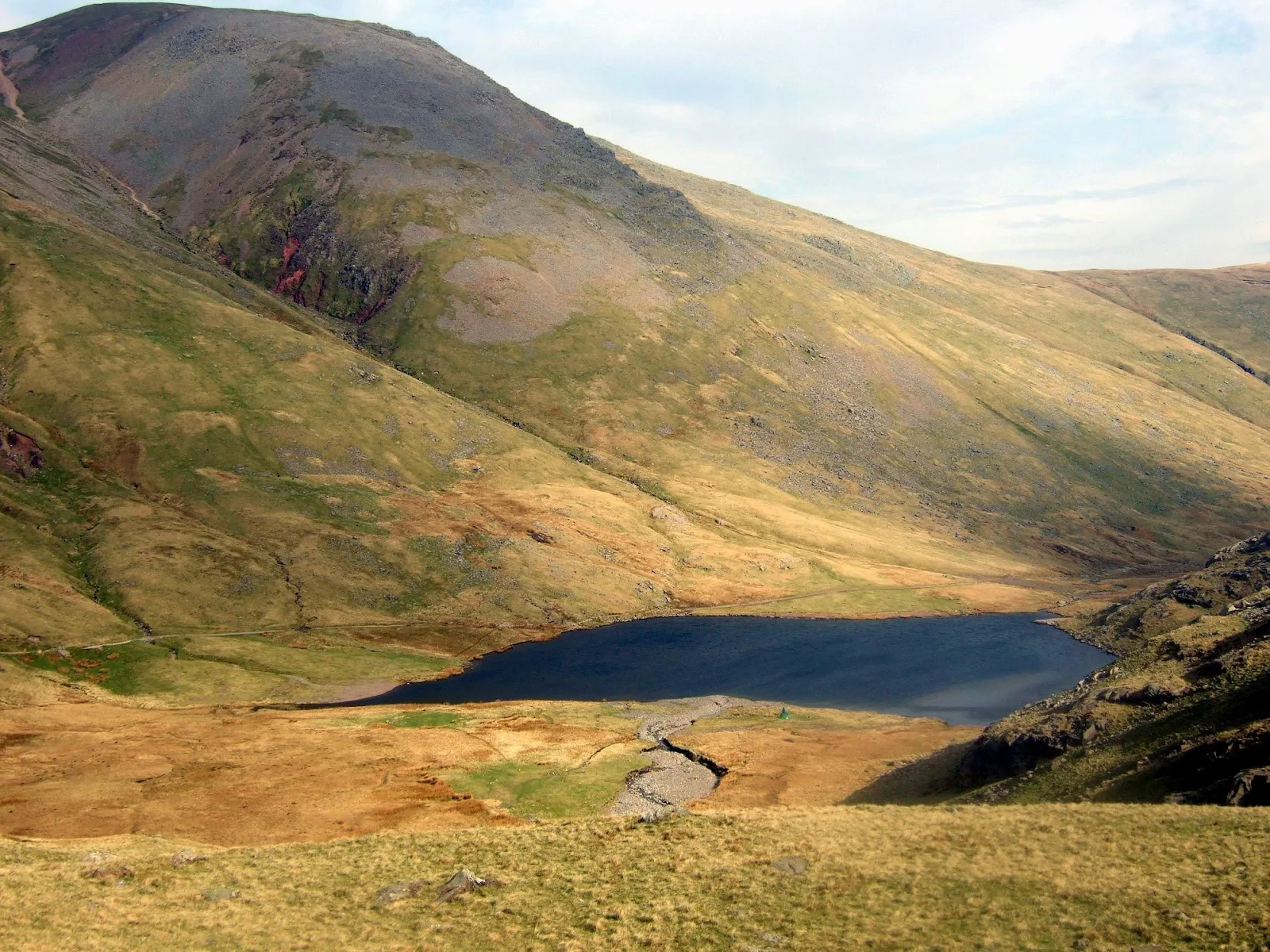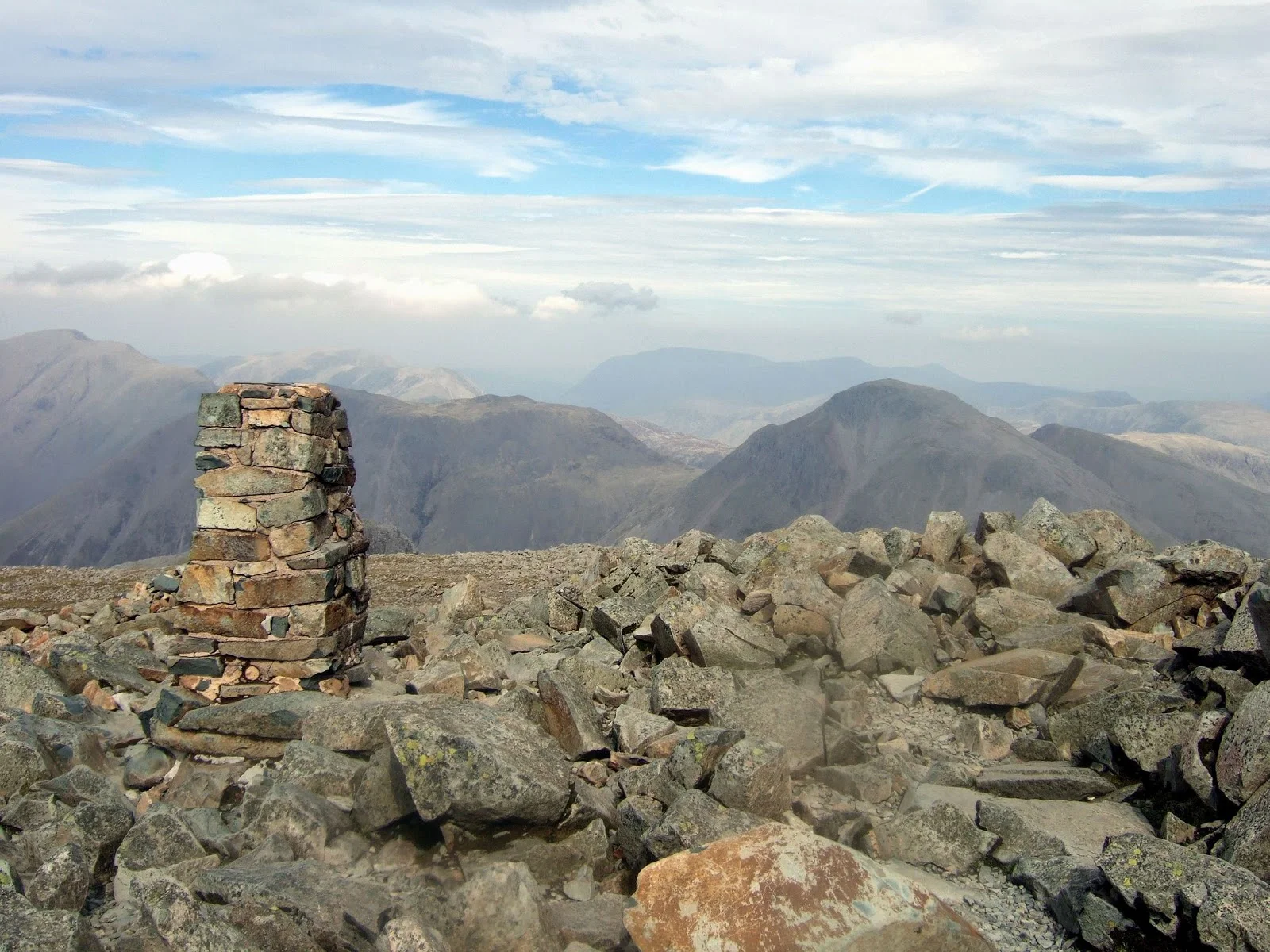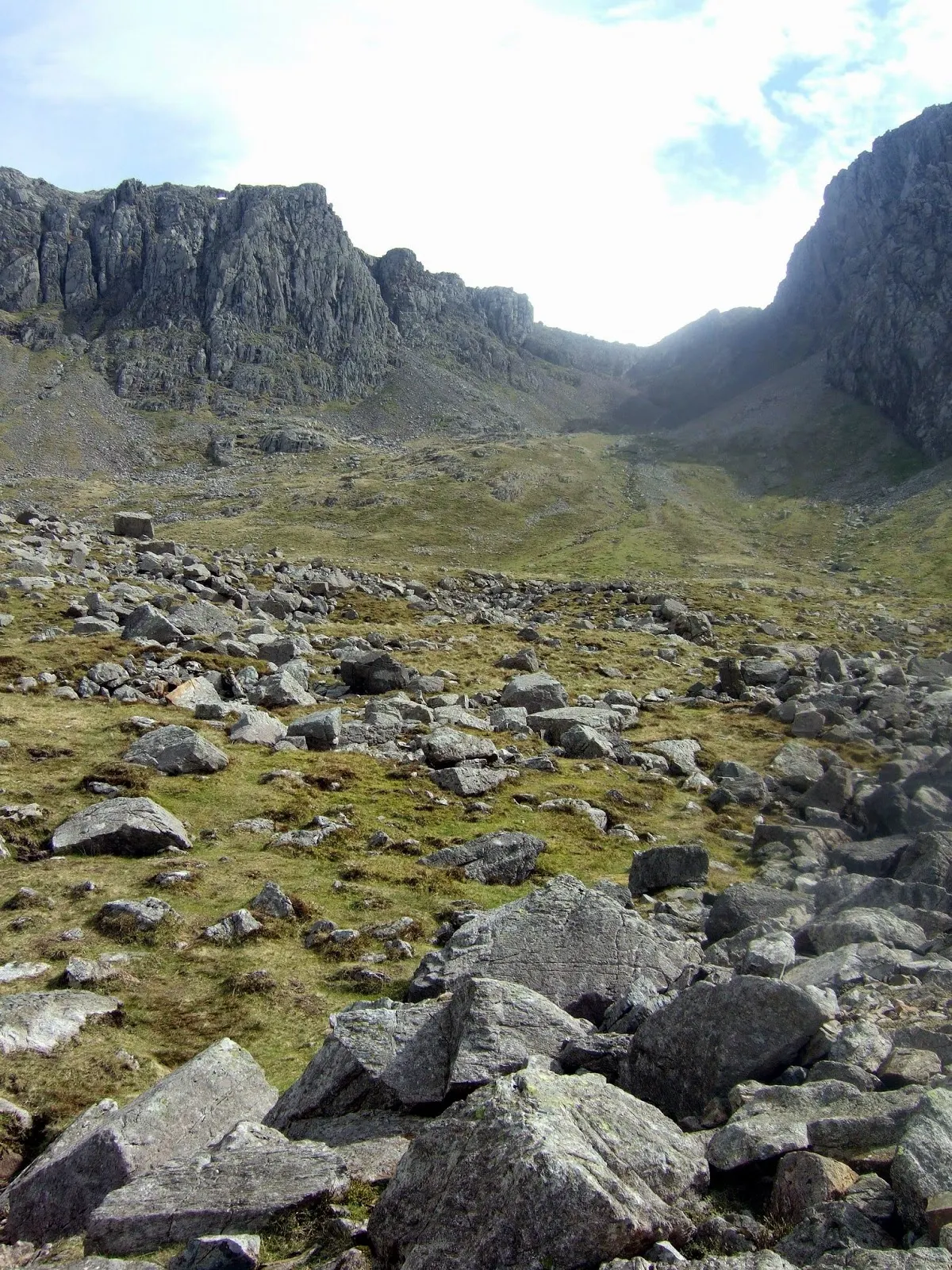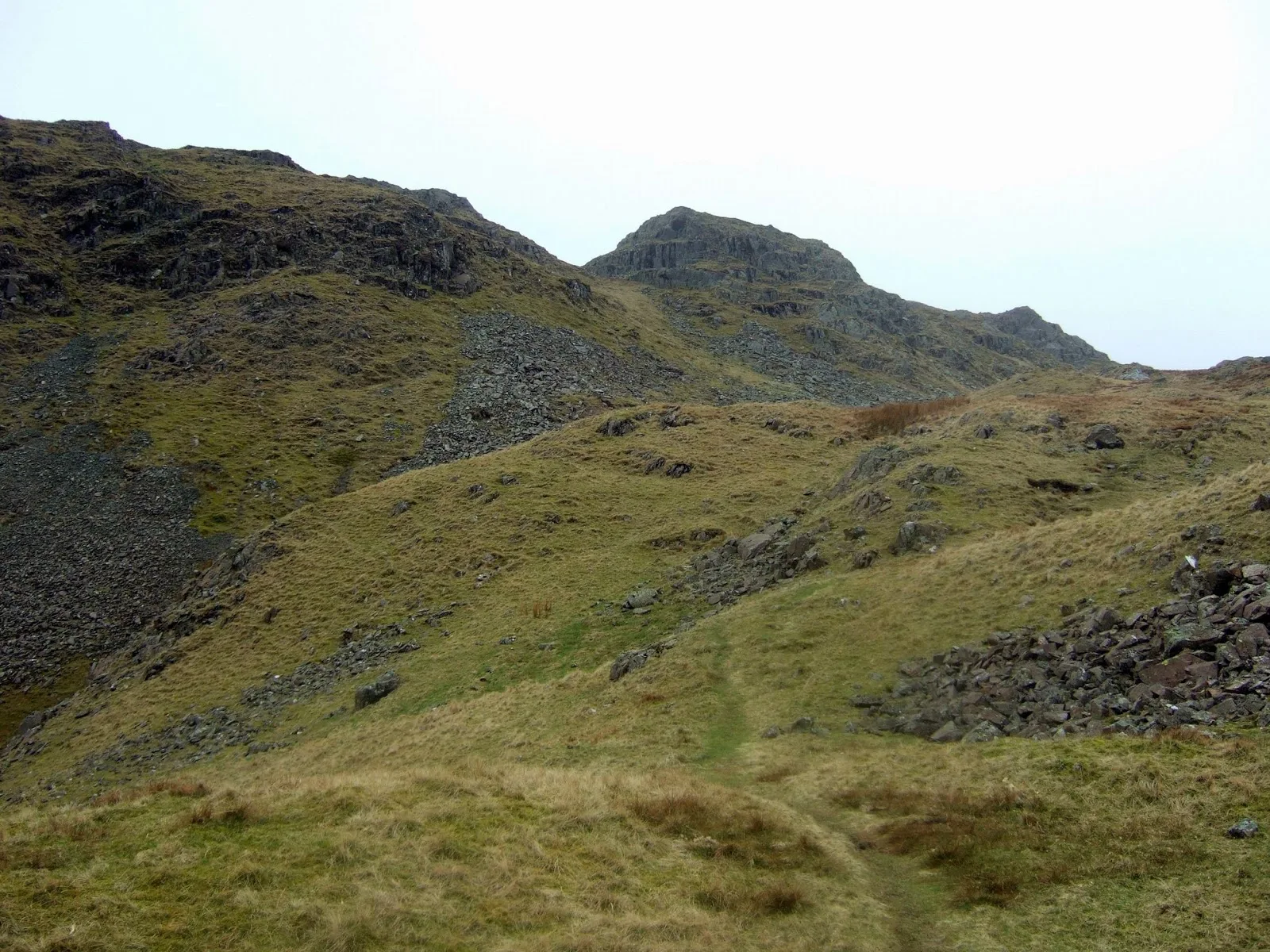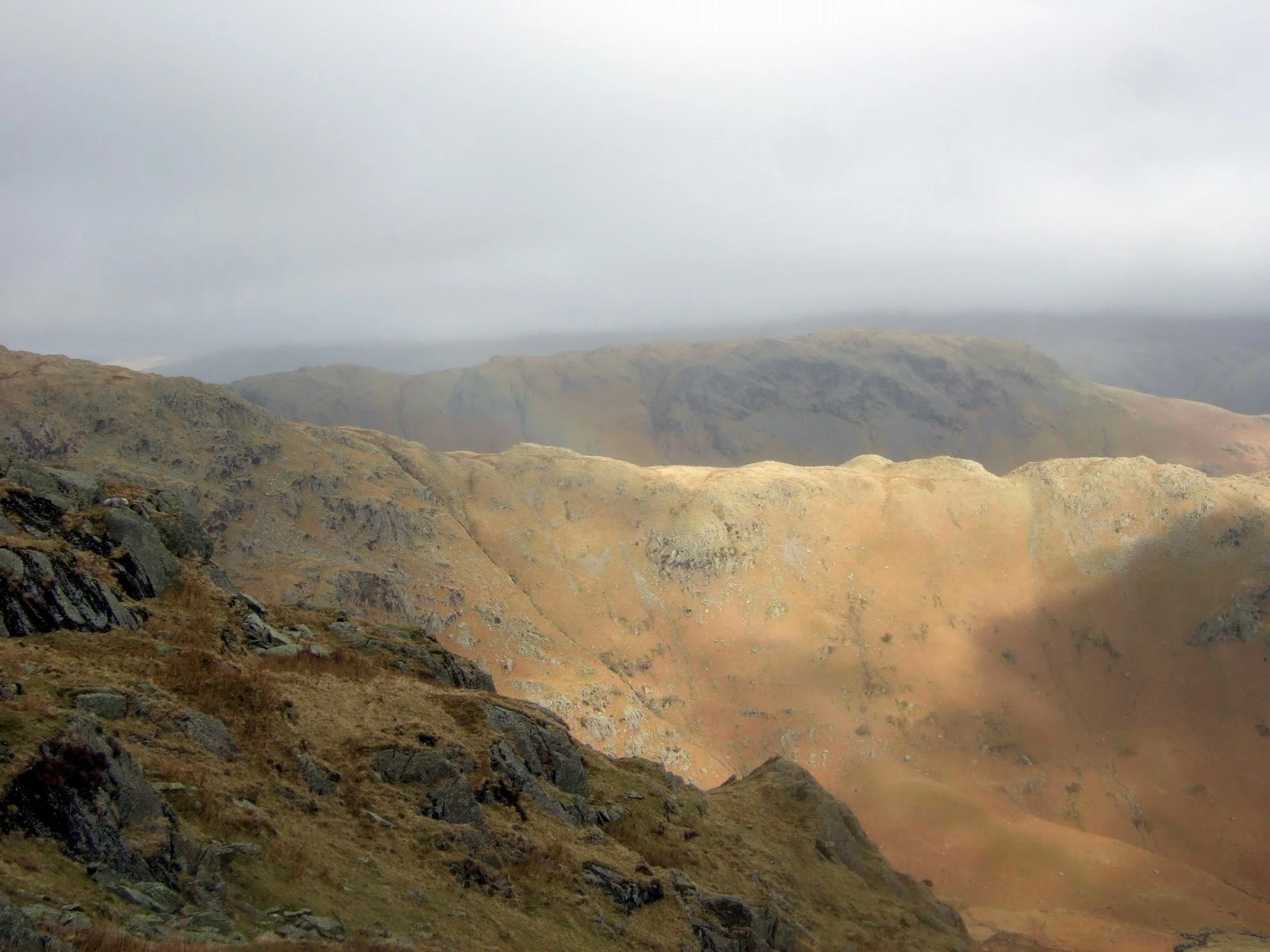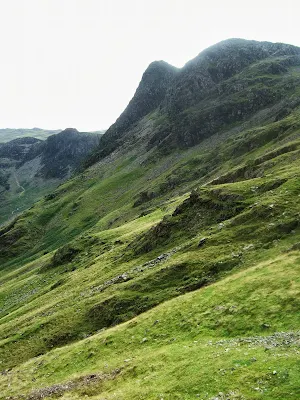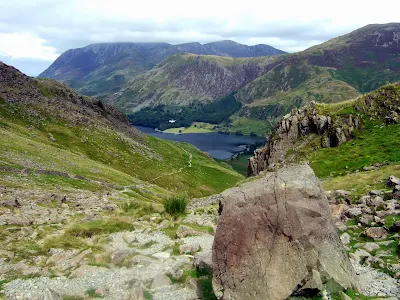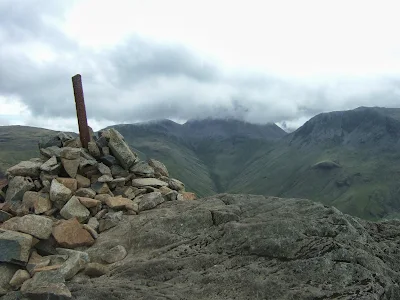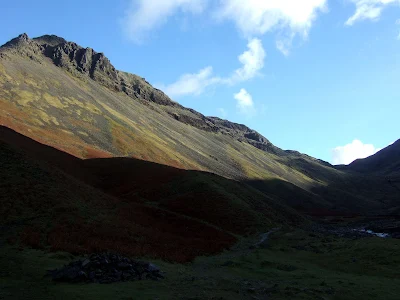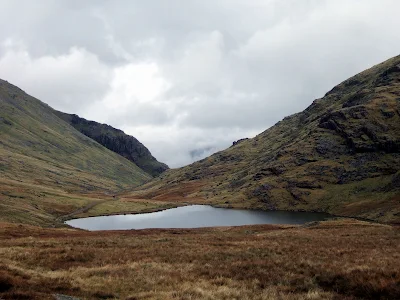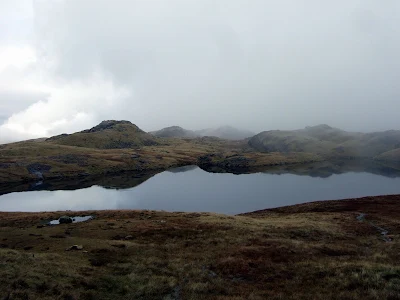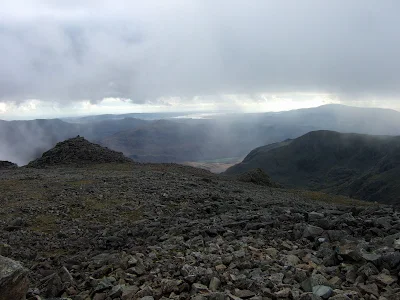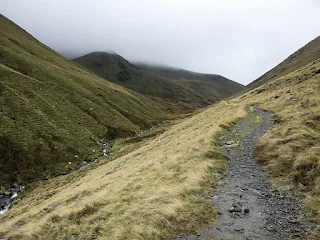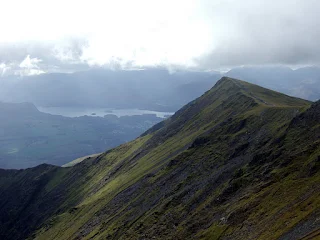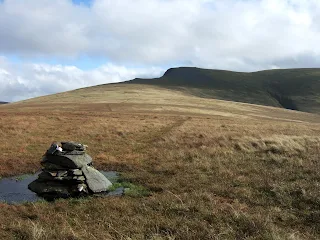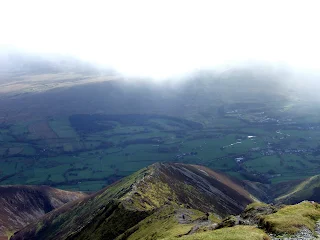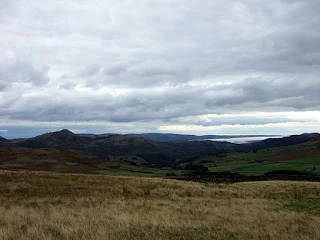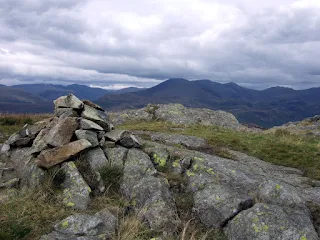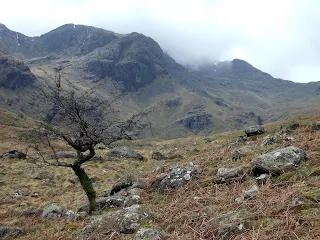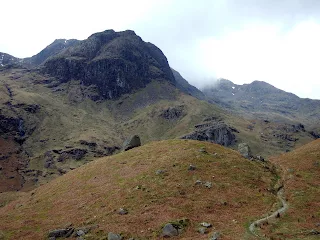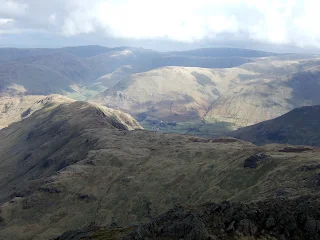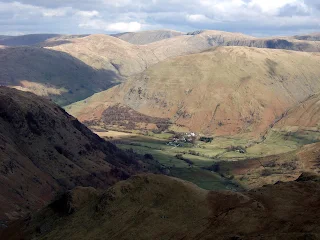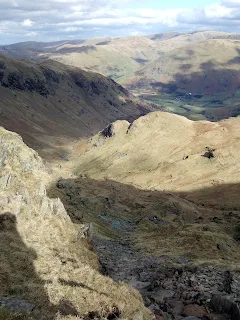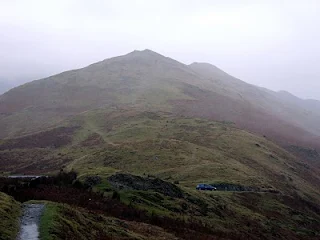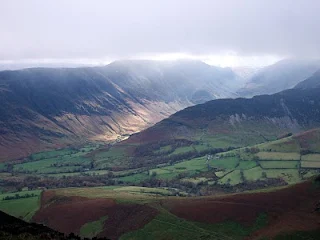The best known and most popular walking route on Fairfield is almost certainly the Fairfield Horseshoe from Ambleside or Rydal but while this is undoubtedly a great day out, it doesn't venture onto the mountain's unseen northern face - it's finest asset.
Here dark and forbidding crags stand guard over the lonely fastnesses of Deepdale and shattered screes replace the sheep cropped turf of the Ambleside slopes. This is a place that has changed little in a thousand years - the home of the raven and the buzzard. It is places like these that keep us coming back.
This walk begins at Bridgend between Patterdale and Brothers Water and covers 14km with some rough steep sections around the head of Deepdale and Cofa Pike. On a weekend when the car park near Brothers water was almost full I saw only one other walker for the length of Deepdale which shows it is not frequented by the crowds.
Leaving the car park I walked north along the road as far as Bridgend where I turned left down a lane marked with a footpath sign. Where this bends right you turn left again through a gate before the row of houses to follow a track firstly past Deepdale Hall Farm then - some distance on - Wall End. Here the path crossed a stream and headed into the unpopulated valley ahead.
As the path rounded an intervening slope the rugged northern side of Fairfield comes into view ahead. Deepdale Hause is the col on the right with Cofa Pike above. The summit was still in cloud.
The path follows the right bank (when ascending) of the river through a level marshy area before beginning a steeper ascent through a region that looks like a geography lesson about the Ice Age; both U-shaped and hanging valleys, moraines, boulders (known as erratics) left by retreating ice - Deepdale has it all but we don't have to try and remember how these things got here - just enjoy the view!
Geography field trip over, the route ascends steeply to one of those so called hanging valleys - a lonely
dale high above the lower one enclosed by the crags of Fairfield with the steep slopes of St Sunday Crag
rising to the right. The way out of here becomes apparent as we reach its head along a rough path.
The path fades as it begins to climb again where there are a choice of ways to gain the ridge above. The obvious gully on the left leading up just to the right of Cofa Pike looks steep - probably because it is - and my route lay further to the right nearer the col linking to St Sunday Crag where there were vestiges of a path and the crags could be avoided. I don't think Deepdale Hause has been used as a pass for many years and finding the way up to it would be dangerous in mist.
The last part up to the ridge is the steepest part of the route and a shelving path is met leading to the ridge itself without difficulty. Cofa Pike looks daunting from here but it's a fun walk up a path. The scrambles are on the crest and can be avoided if so desired.
The ridge gained we meet the broad path from St Sunday Crag - that's my favorate route up Fairfield - and are greeted with this view of Dollywaggon Pike, Nethermost Pike and Helvellyn across Grisedale. We turn left at this point but if you didn't know that then you need to think about getting the map out!
The path ascends steeply over Cofa Pike - follow the crest at the top if you like scrambling - and on up to Fairfield's flat summit at 2863 feet or 873m - the route's high point.
The next photo shows the view from just past the summit of Fairfield, looking towards the start point near Brothers Water, itself hidden behind the intervening ridge which is known as Hartsop Above How. This ridge also offers a fine route down to finish at the road half a mile beyond the start point.
To descend this way follow the path roughly ENE down from the next summit of Hart Crag. Note: The start of this way down descends between crags and is easy as long as the path is not lost so the advice of many good stories - do not leave the path - holds true here! Dangerous in mist - do not try! The descent along Hartsop above How is easy and enjoyable all the way down with stunning views of Dovedale. This way is probably better than the one I did today but I had already done it previously.
For today's route follow the path up and over Hart Crag which rises ahead. There is a wide and usually popular path following the Fairfield Horseshoe - and descend the rough slopes on the far side to a grassy plateau between Hart Crag and Dove Crag. Near the low point between the 2 fells saunter off to the left towards where a prominent cairn is seen in the distance. People will doubtless think you are going the wrong way but beyond the cairn a faint path is found which becomes more pronounced lower down.
The start of this path is not obvious but it is there and it leads to a hidden grassy hollow containing a large boulder which is a wonderful and quiet spot to stop for a while - if the sun is out that is - and the view of Dovedale from its eastern edge is sublime.
The hollow lies above steep ground and the path heads down a gully below the rock wall of Dove Crag on the right. Stone steps have been placed to facilitate progress as this route used to be excessively loose and rough. The following picture shows the view down the gully twards the wild upper part of Dovedale. Once down the steep section a choice of ways is found - to cross the river or not?
Both lead to the farm of Hartsop Hall and on to Brothers Water but the left hand path is more direct following the slope down while the other - across the river - descends into woodland and through Dovedale itself. Both are okay but I guess if time is no issue the valley one is more interesting - if you're in a hurry keep left. The valley path initially fords the stream but if this looks dodgy as after heavy rain which is frequent here then there is a footbridge a little further on.
Pete Buckley May 2011

